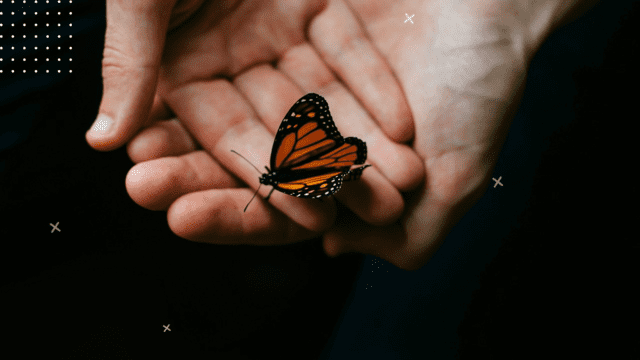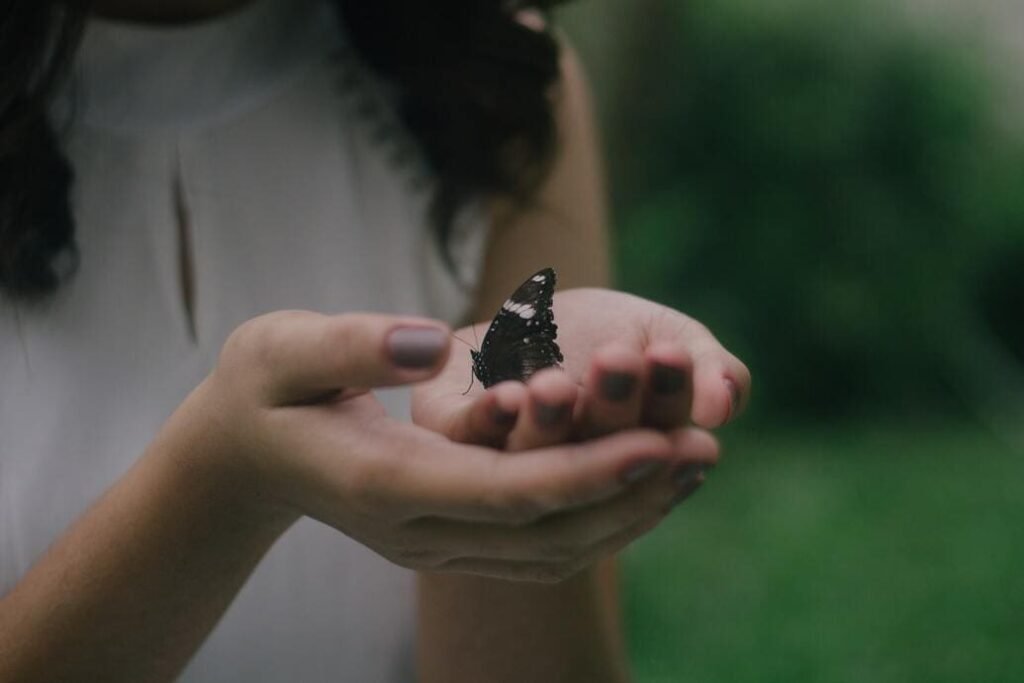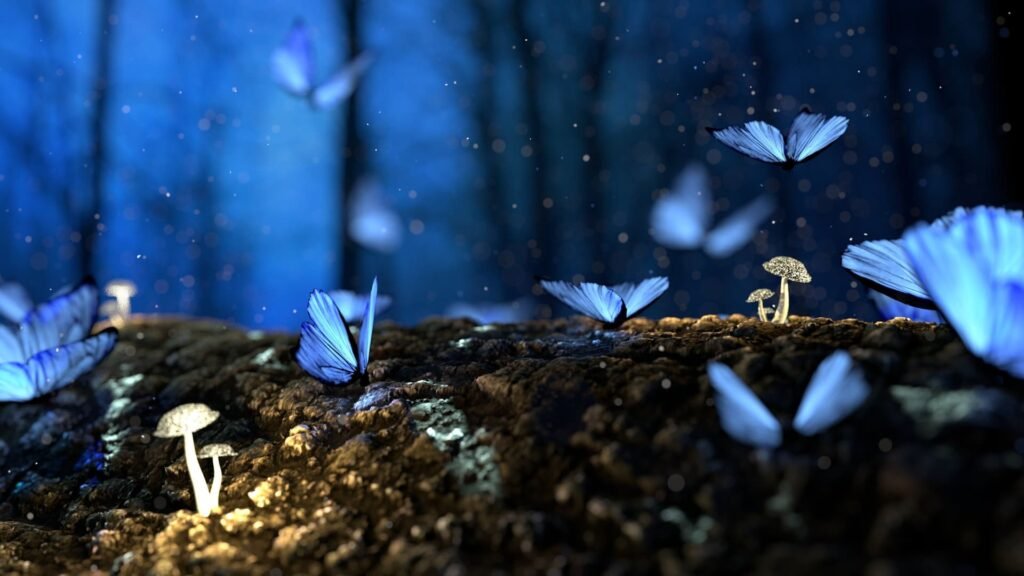


Butterflies are ubiquitous symbols of natural beauty and summer days. Their brightly colored wings seem delicate and harmless as they flutter from flower to flower. But do butterflies bite? Could these insects also sting if provoked? It’s a common question many curious minds ponder about butterflies.
The quick answer? No, butterflies do not bite humans. Anatomically, they simply lack the physical structures and adaptations to pierce the skin or chew as other insects can. But they do have some fascinating defensive adaptations that help them survive without resorting to biting.
In this guide, we’ll cover everything you need to know to satisfy your curiosity about butterflies, biting, and more:
By the end, you’ll have a new appreciation for the wonders of butterflies as well as peace of mind that they pose little risk for biting or harm.
Let’s start by looking at why butterflies lack the capacity to bite at all. They simply don’t have the right anatomy for it.
Butterflies completely lack anything resembling teeth or even mandibles that certain insects use to bite. Instead, they have a long tube-like structure called a proboscis that functions as their mouth and feeding apparatus.
This proboscis works like a drinking straw, sucking up liquid food through capillary action. When not in use, butterflies coil it under their head for protection. To drink, they simply extend the straw-like coil to dip it into liquid nectar or juices.
So rather than chewing or biting food, butterflies exclusively drink their meals using this specialized anatomy. It’s optimized for floral nectars and similar liquid nutrition sources.

Not only do butterflies lack biting and chewing mouthparts, their proboscis is also incapable of piercing human skin or flesh. It evolved purely to sip liquid food like flower nectar.
At most, a curious butterfly might harmlessly land on a sweaty arm and sample the salt from your skin. But its flexible tube cannot puncture or tear flesh like a mosquito or other biting insect could.
So while the tickling sensation of tiny butterfly feet landing on you gives the impression they could bite, rest assured there’s no risk of that actually occurring!
Now that we’ve established why butterflies cannot bite humans, you might be wondering exactly how they manage to survive and feed themselves without teeth or biting capabilities. It turns out they’ve evolved some fascinating dietary adaptations.
A butterfly’s primary food source is flower nectar, an ideal meal for their liquid-sipping proboscis. Brightly colored, sweet-smelling flowers advertise this nutritious nectar reward to attract butterfly pollination services in return.
It’s a mutually beneficial relationship where both parties get fed! Besides flower nectar, butterflies will also drink the sugary juices of overripe fruits, tree sap, and other readily available liquids.
In addition to sugary floral resources, butterflies have sometimes been observed “puddling” on wet ground, mud, and even urine or sweaty clothing left out to dry.
This provides essential salts, amino acids, nitrogen, and minerals to supplement their carbohydrate-rich nectar diet. So don’t be too alarmed if you notice a butterfly lapping up sweat from skin or clothing! They have taste receptors on their feet to detect these nutritious substances.
Very rarely, some butterflies have been documented drinking blood from open wounds on animals or from carcasses. Again, they cannot bite or break skin themselves – they rely on pre-existing cuts to access nutritious blood.
This is primarily a source of protein and other dietary components not found in nectar. Generally though, floral resources satisfy the vast majority of a butterfly’s needs!
Lacking teeth, stingers, or other physical defenses, butterflies have instead evolved some remarkably clever adaptations to avoid becoming prey themselves! These include:
Some species like the Monarch butterfly advertise their toxic or foul taste through vivid orange and black patterns. Predators learn to associate the coloration with an unpleasant experience, and thus avoid butterflies displaying warning colors.
Caterpillars like the Monarch sequester defensive toxins from their host plants that persist into the adult butterfly stage. Birds or other predators get sick after eating them, quickly learning to avoid those species based on coloration cues.
Some butterflies instead rely on camouflage patterns that allow them to disappear against bark, leaves, or other natural backdrops. The aptly named Mourning Cloak butterfly disguises itself against tree bark.
Batesian mimicry describes non-toxic species that evolve wing patterns resembling foul-tasting butterflies. They trick predators into avoiding them as well, despite not actually being toxic themselves!
Between chemical defenses, warning displays for predators, camouflage, and mimicry, butterflies have many adaptations to avoid being eaten – all without having to bite!
While butterflies don’t pose any bite risk or danger themselves, their larval caterpillar stages have slightly more defensive capabilities:
Caterpillars have chewing mouthparts specialized for devouring leaves and vegetation. They primarily use these mandibles to feed voraciously and grow rapidly.
They don’t directly bite for defense, but could potentially nibble if carelessly handled. Regardless, their small jaws cannot puncture skin.
Some caterpillar species have venomous spines or stinging hairs as protection, like the Spiny Elm caterpillar. Getting poked can cause minor skin irritation, rashes, etc. – generally harmless but unpleasant.
Much like avoiding touching fuzzy caterpillars, the stinging risk can be prevented by not handling them. As always, teaching kids not to touch is best! If stung, using scotch tape to remove spines and washing the area thoroughly helps.
So while an exception to butterflies themselves, caterpillars do warrant gentle handling. Their coloring often indicates the presence of stinging defenses, helping you determine which are safe to handle!

While butterflies do not bite humans, avoiding contact with adult butterflies and larvae allows you to safely observe them without harming their delicate wings, bodies, or provoking stings. Here are some tips:
Butterflies are mostly harmless miracles of nature not to be feared. While fascinating adaptations allow them to drink suitable liquids, butterflies completely lack biting capacity or desire to bite humans. With some sensible precautions around larvae, we can freely appreciate the grace and colors of these winged insects visiting our gardens!
Do butterflies have teeth to bite with?
No. Butterflies do not have teeth, mandibles, or any chewing/biting mouthparts. They drink liquid food through a long proboscis tube. So it is physically impossible for them to bite.
What defensive mechanisms do butterflies have?
Butterflies rely on bright warning coloration, chemical toxins, camouflage patterns, and mimicry instead of bite defenses. These help them signal toxicity and avoid predation.
Can a butterfly’s proboscis pierce human skin?
No. A butterfly’s flexible proboscis is strictly adapted for drinking liquids like nectar. It cannot puncture or tear human flesh when they land on skin.
Do caterpillars bite or sting?
Caterpillars use mandibles to eat vegetation but do not directly bite for defense. However, some species have stinging spines that can cause skin irritation. Handle fuzzy caterpillars gently.
Is it safe to handle butterflies?
It’s best not to touch butterflies. Their wings and bodies are very delicate and even gentle handling risks damaging them. Safely admire them from a small distance instead.